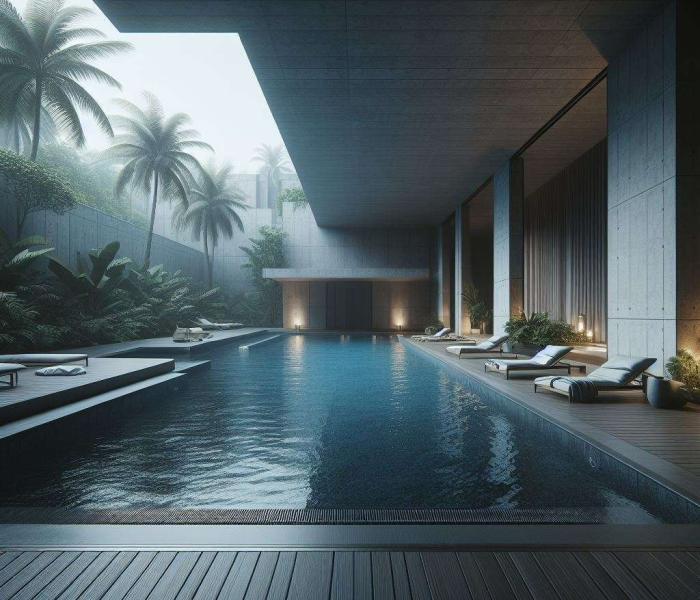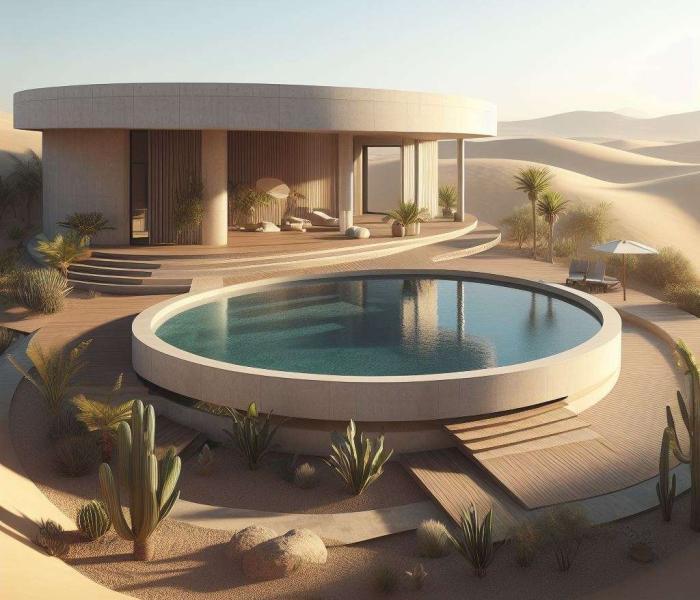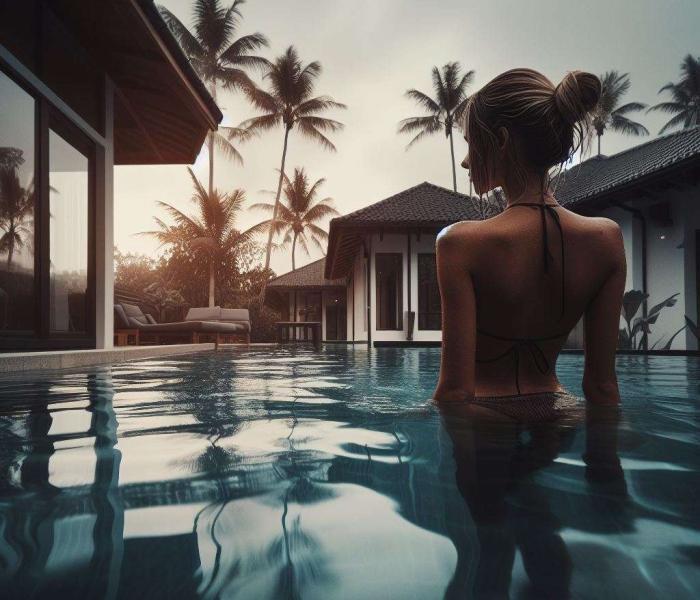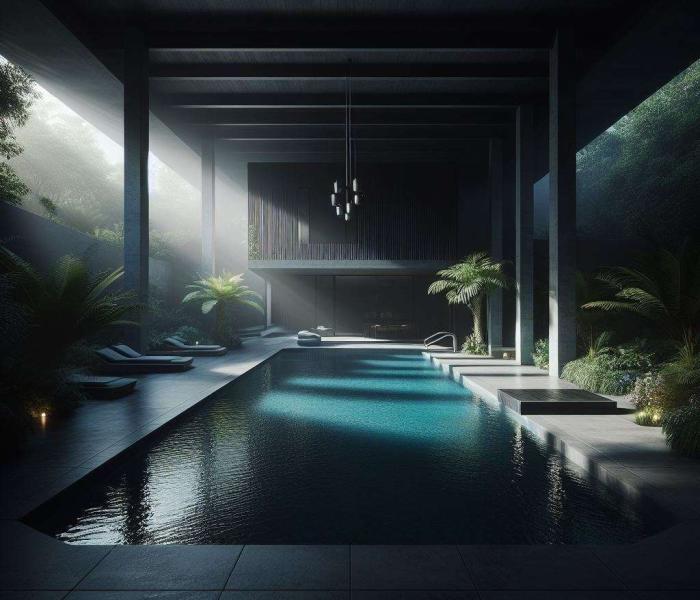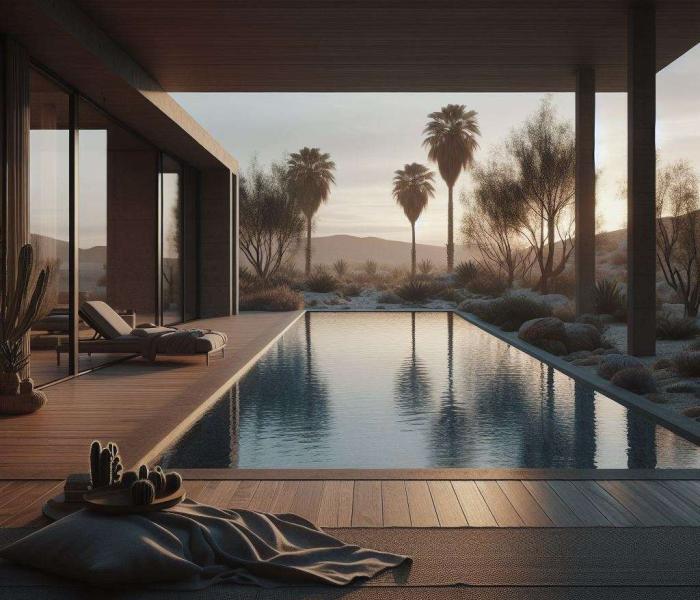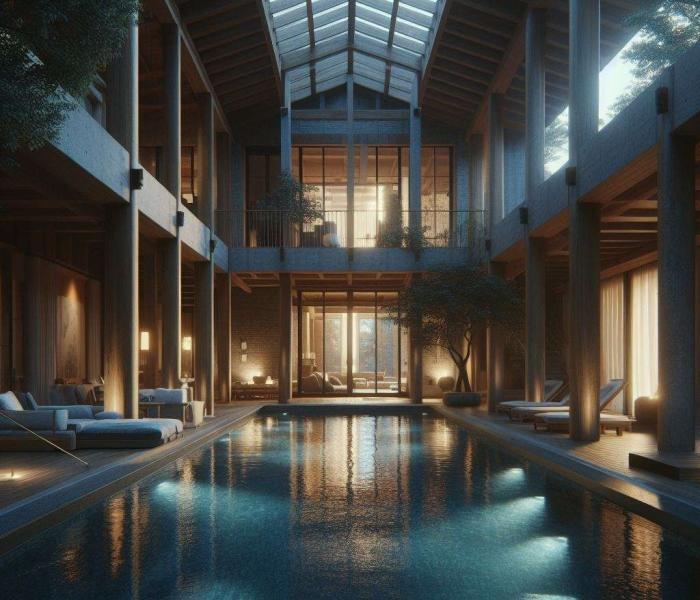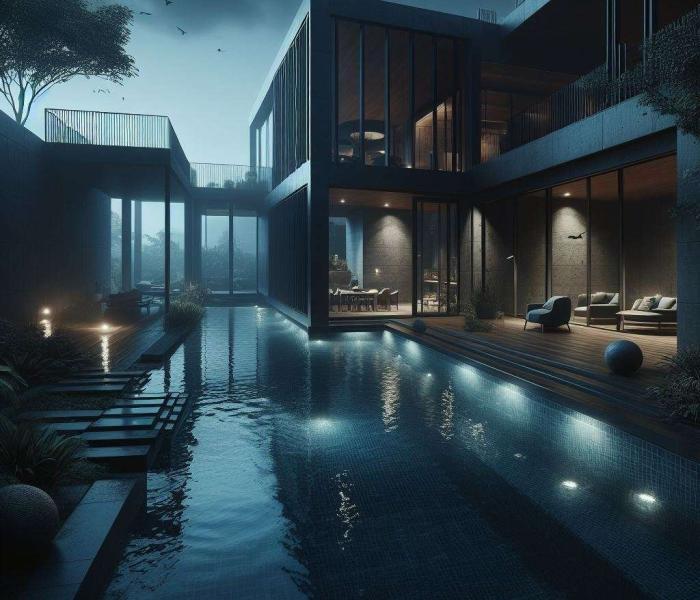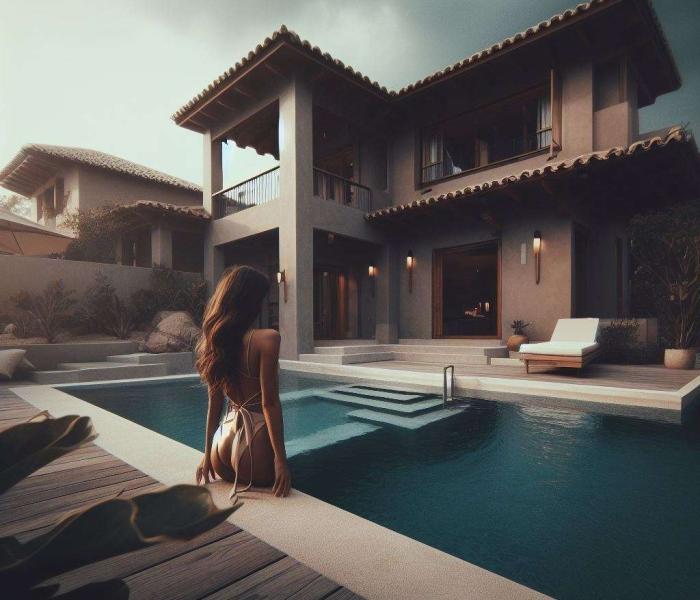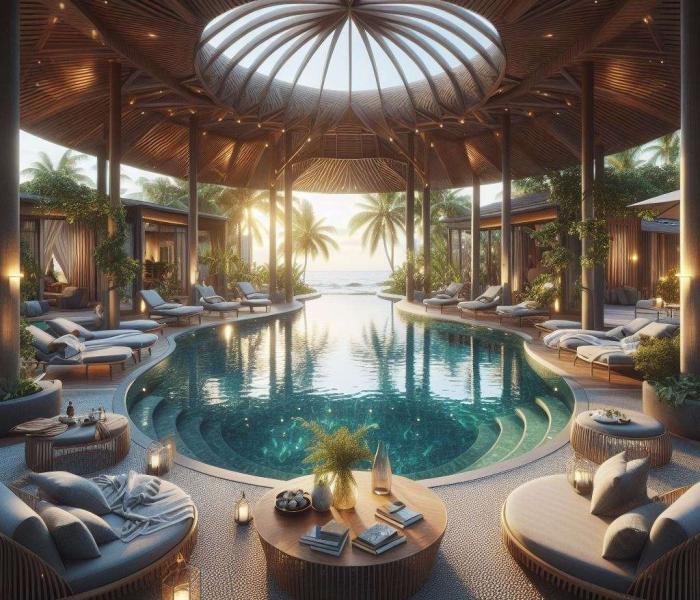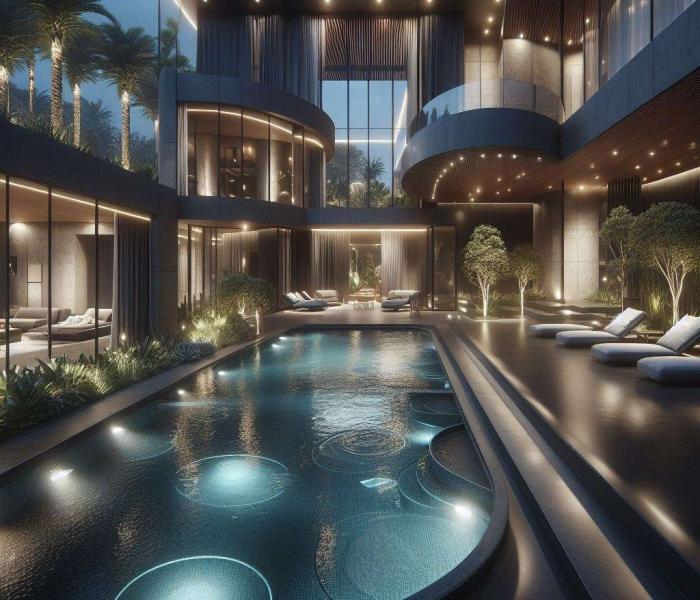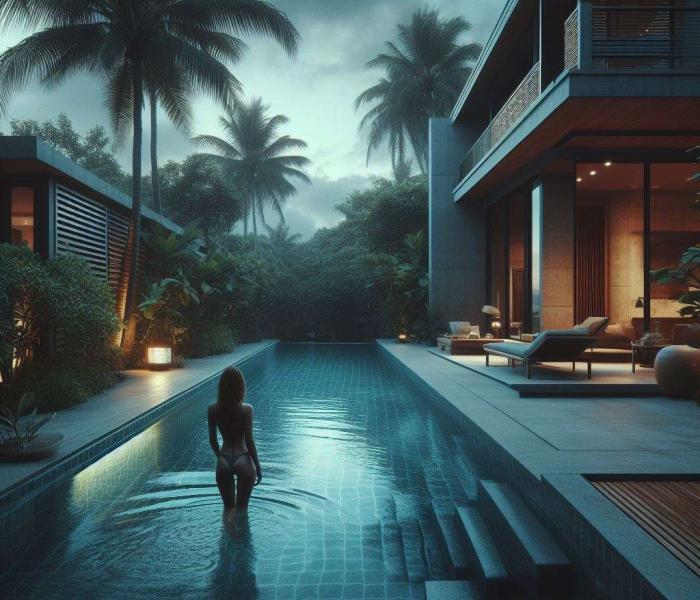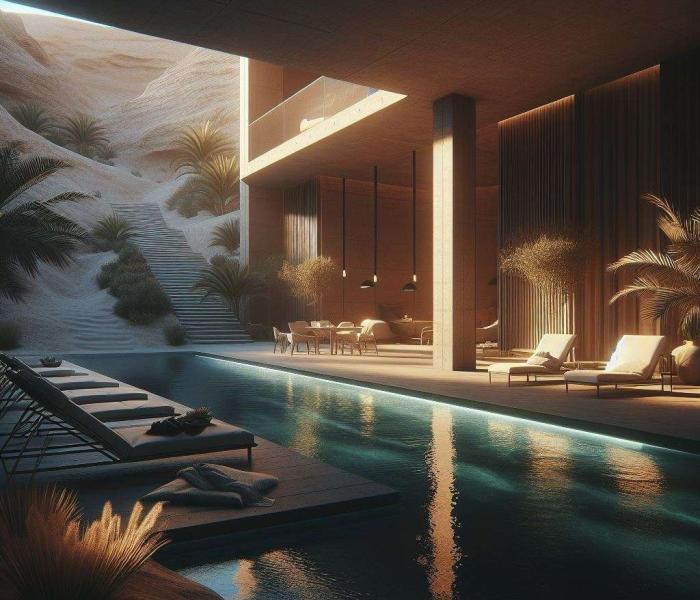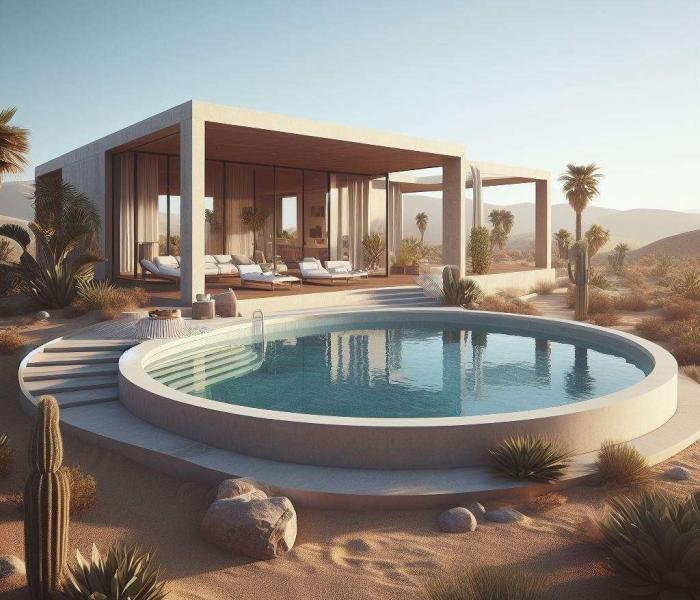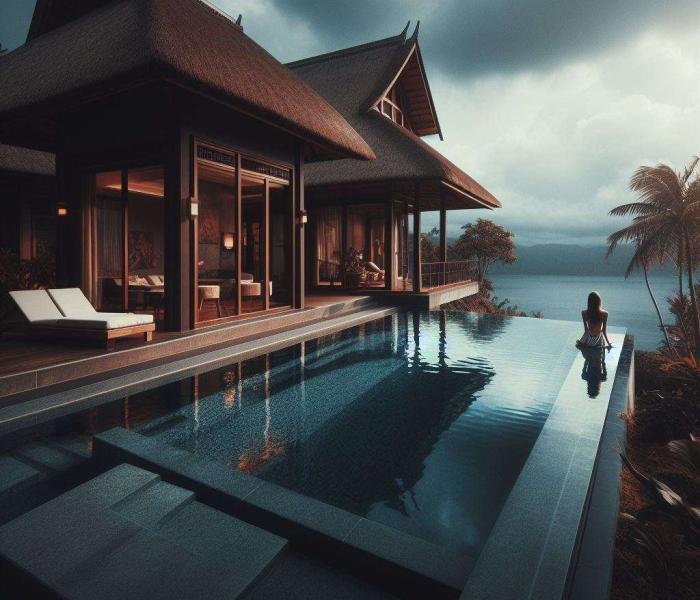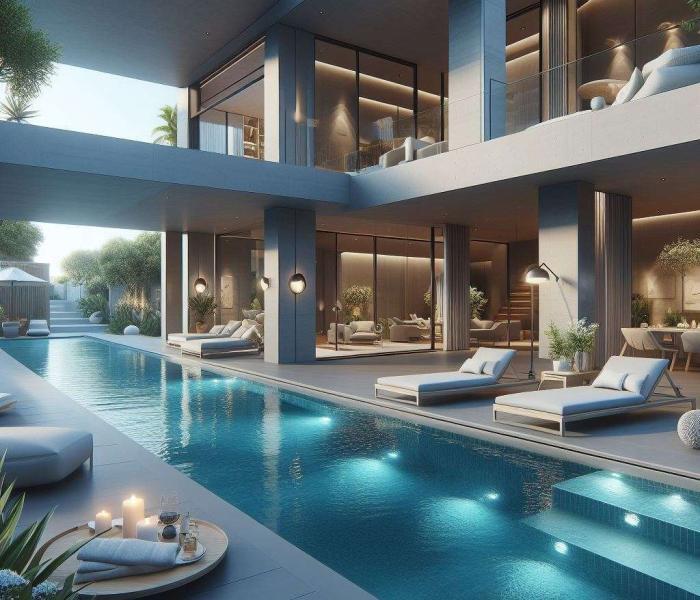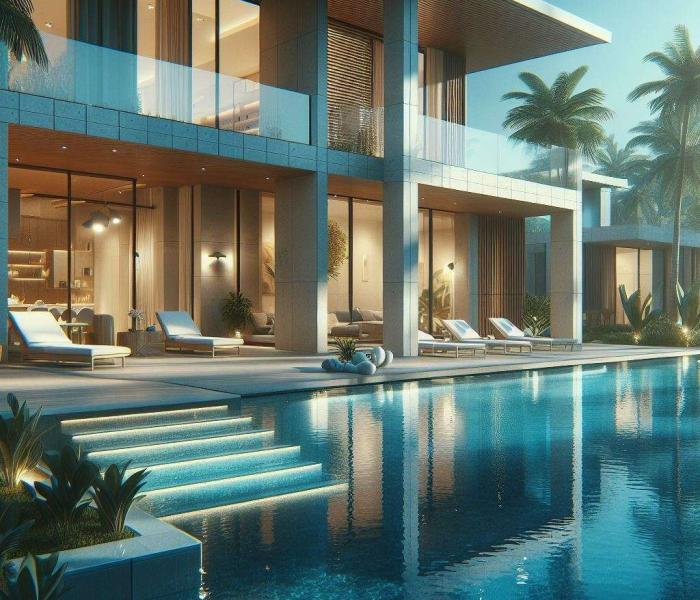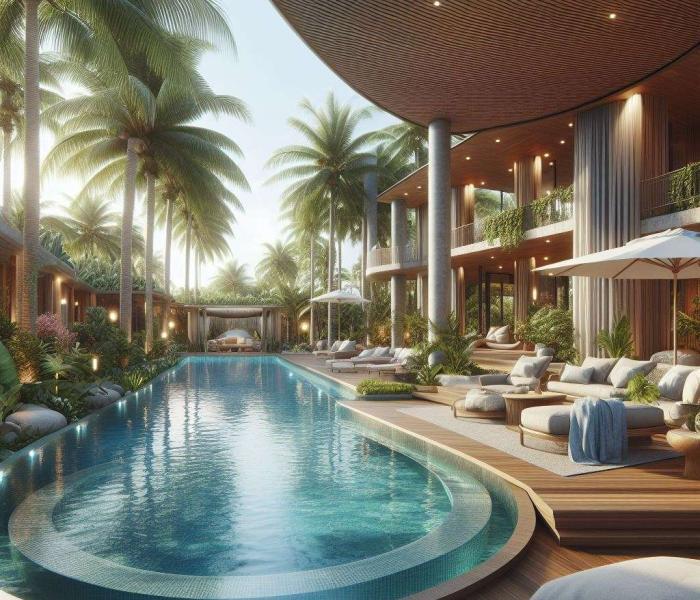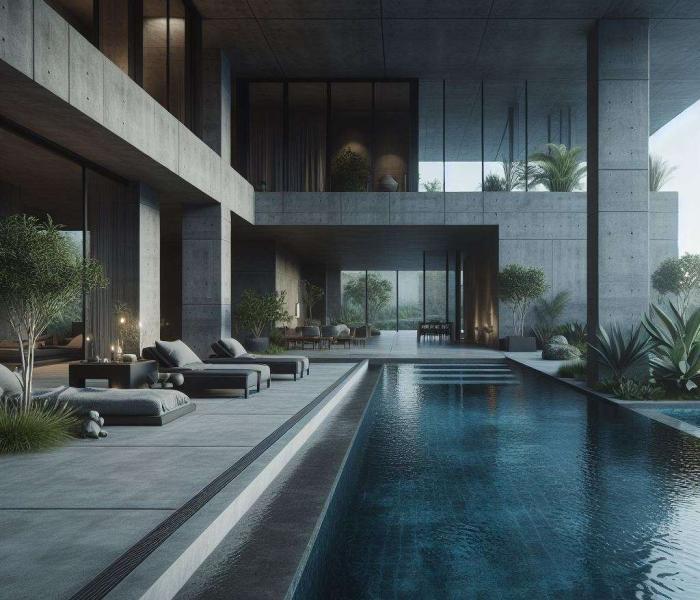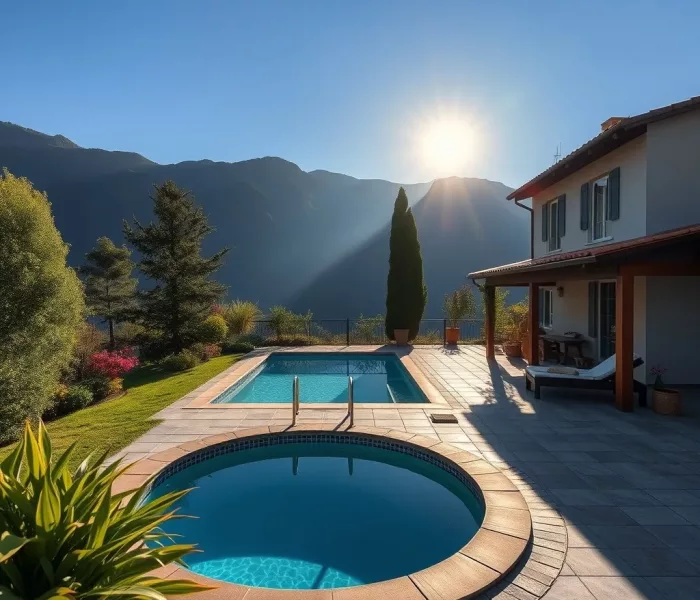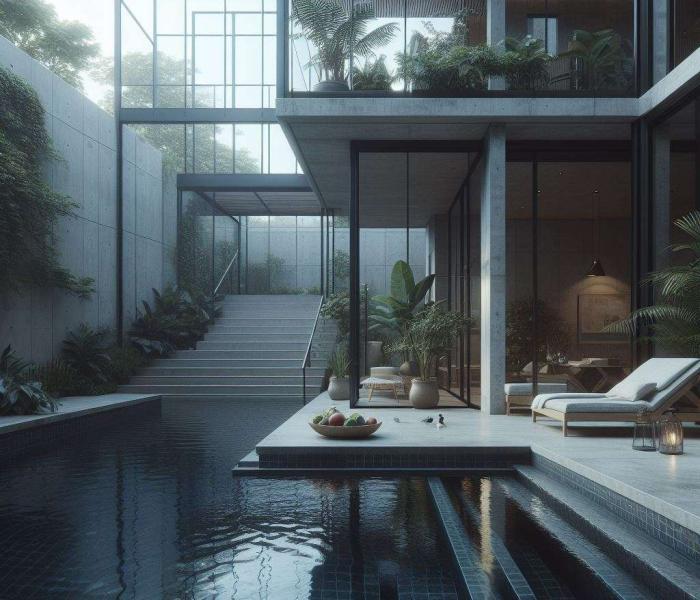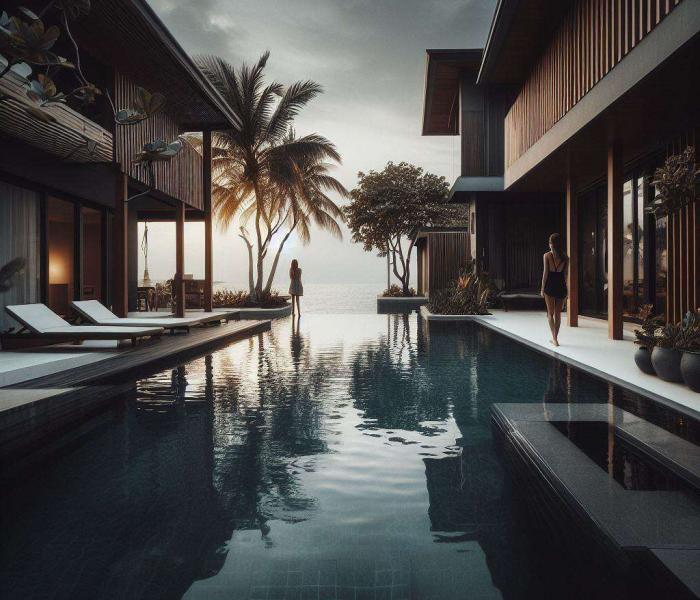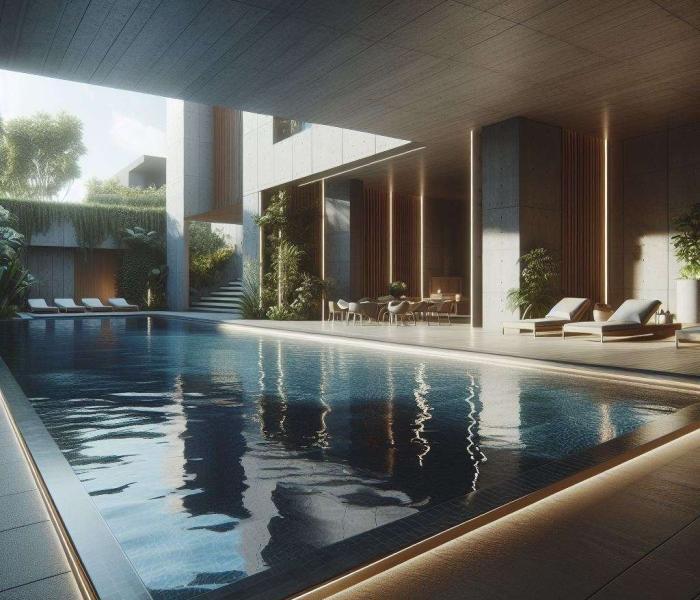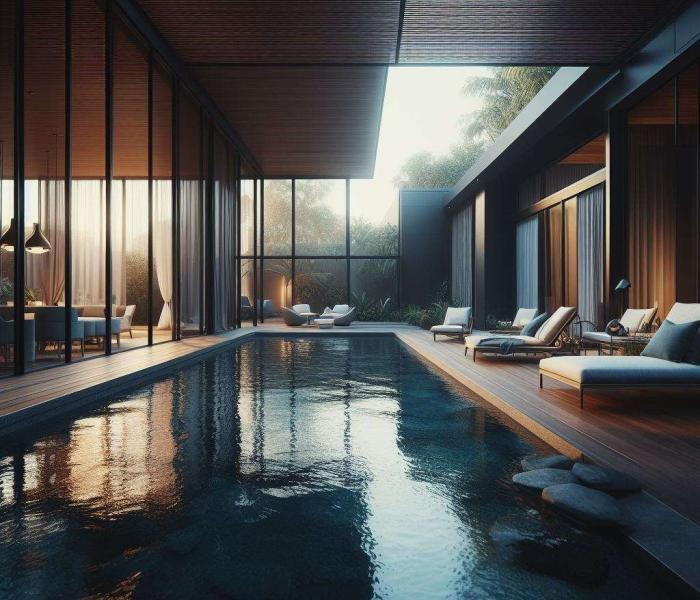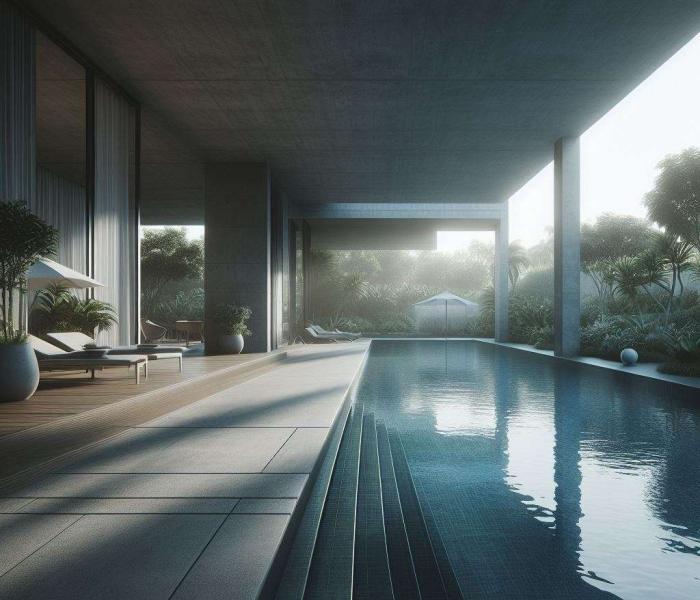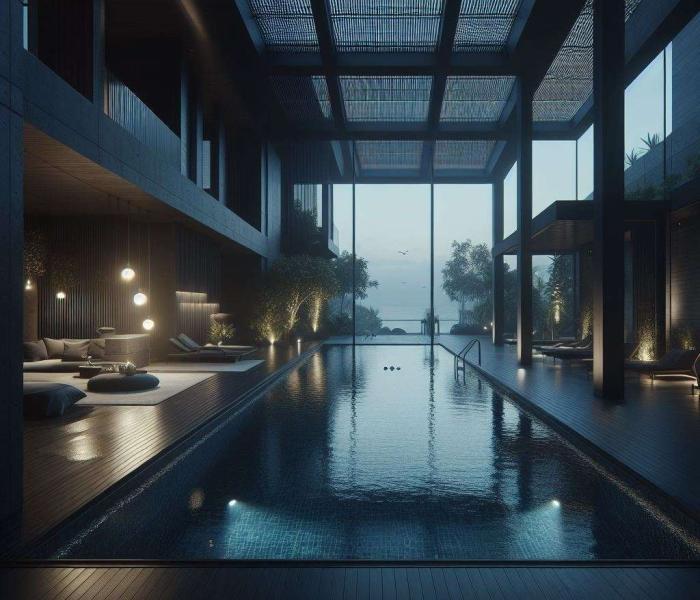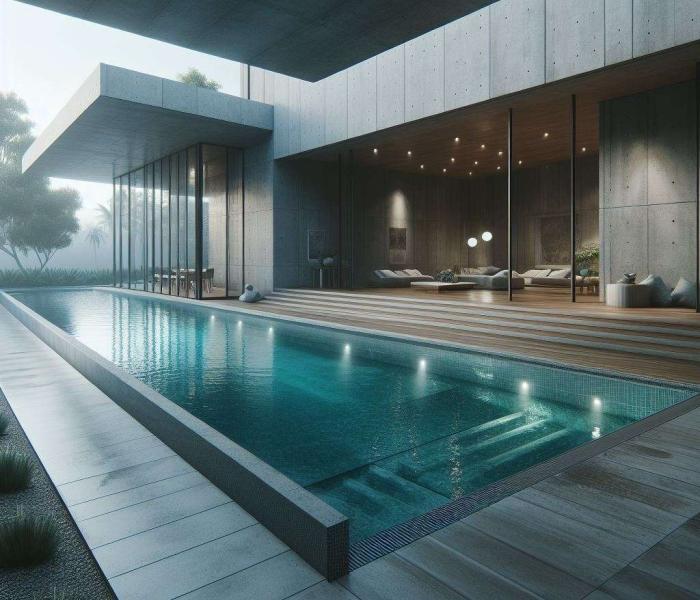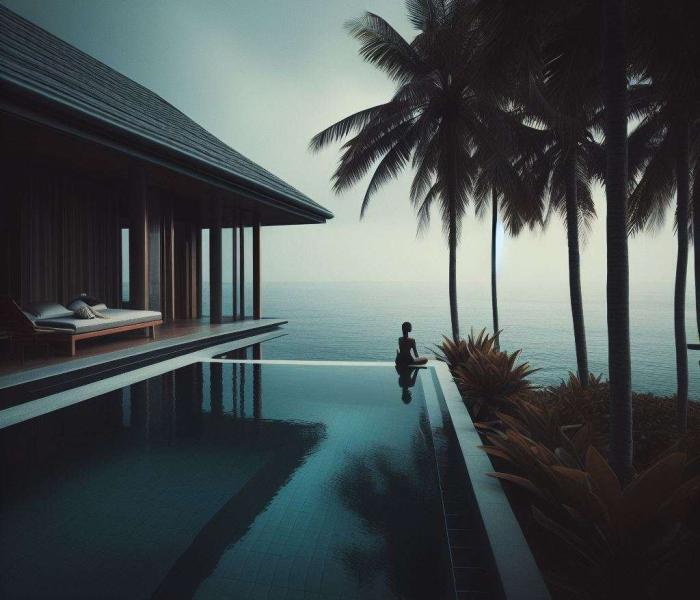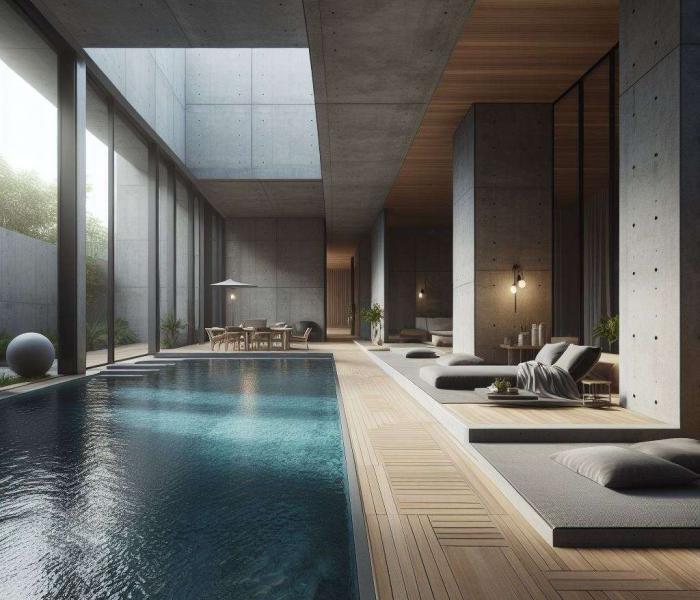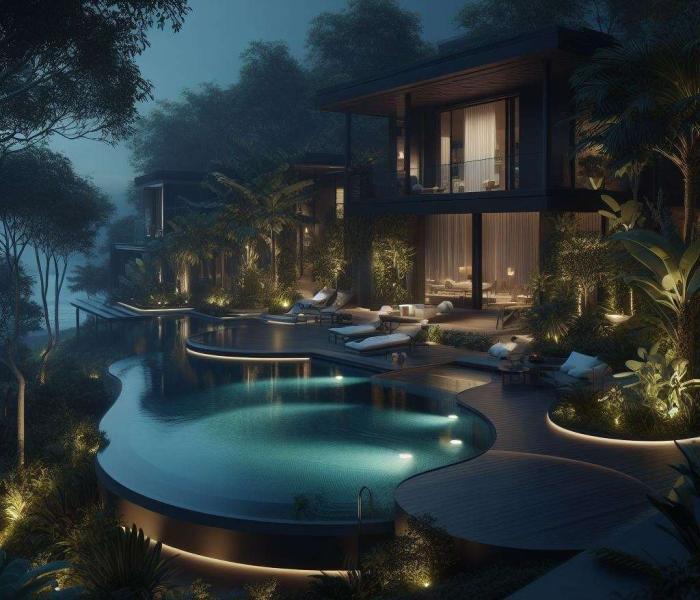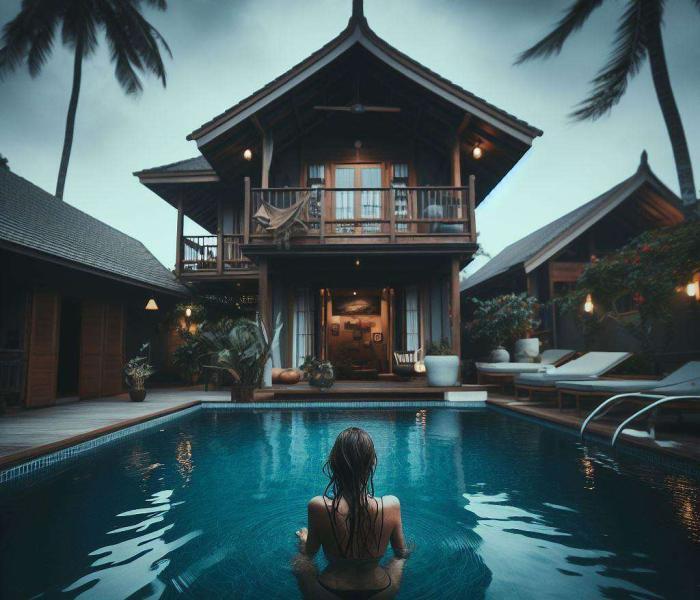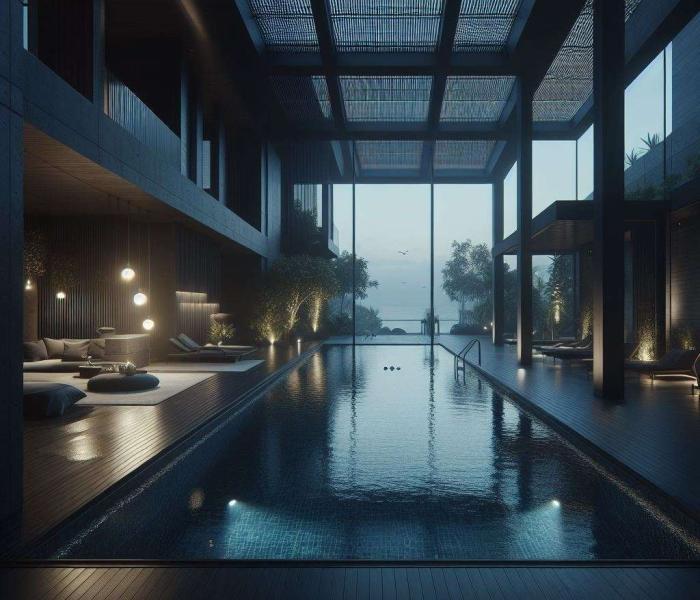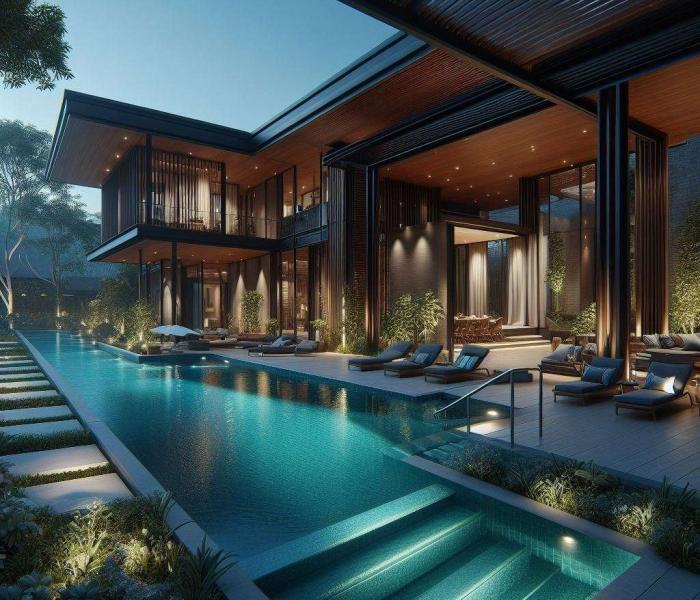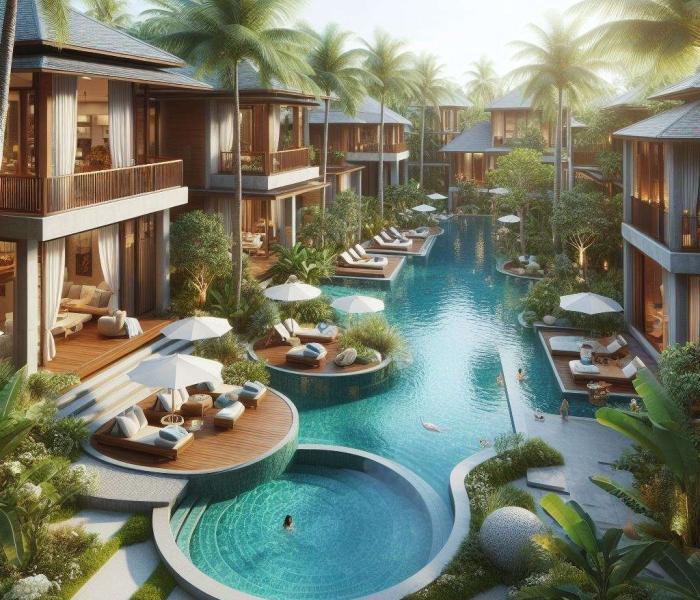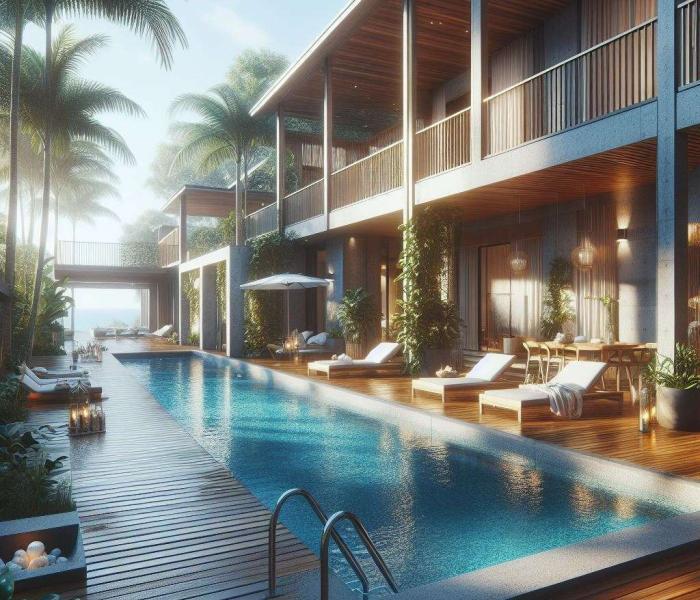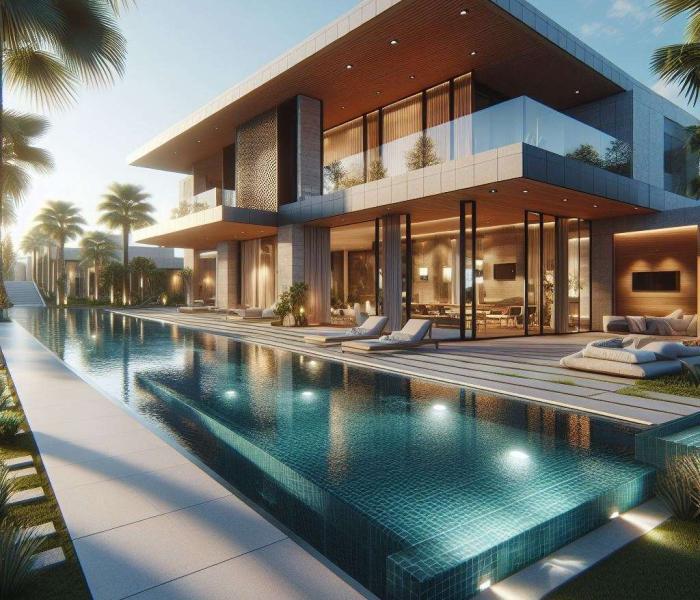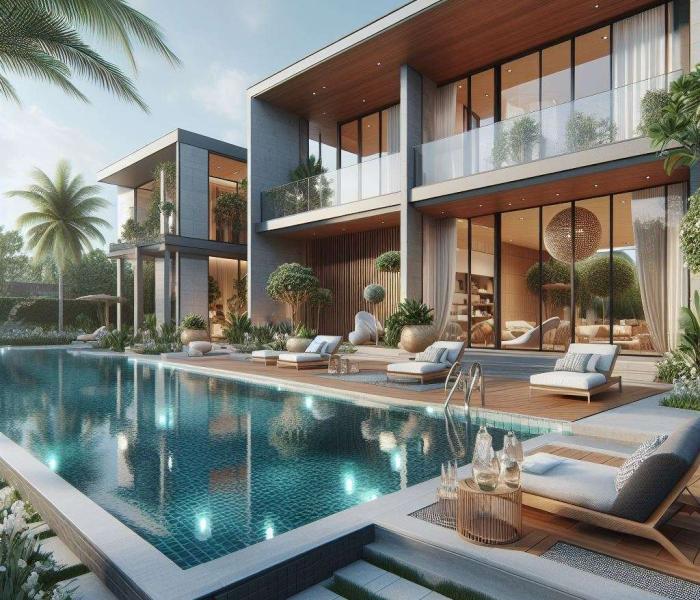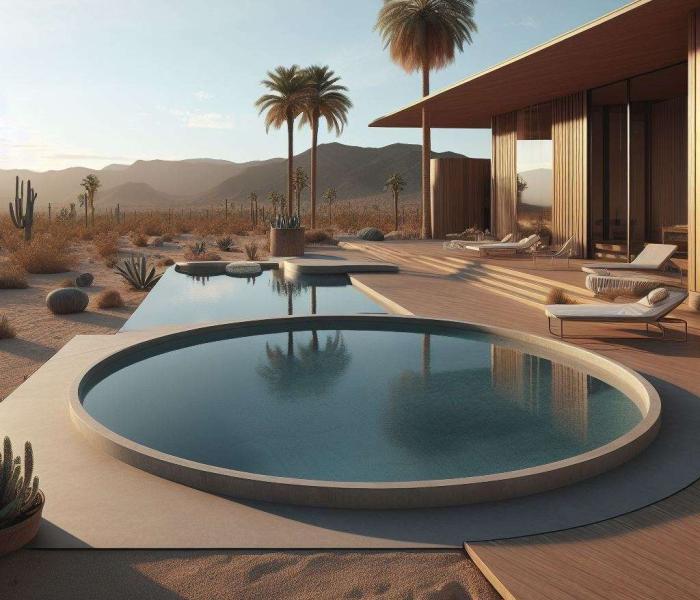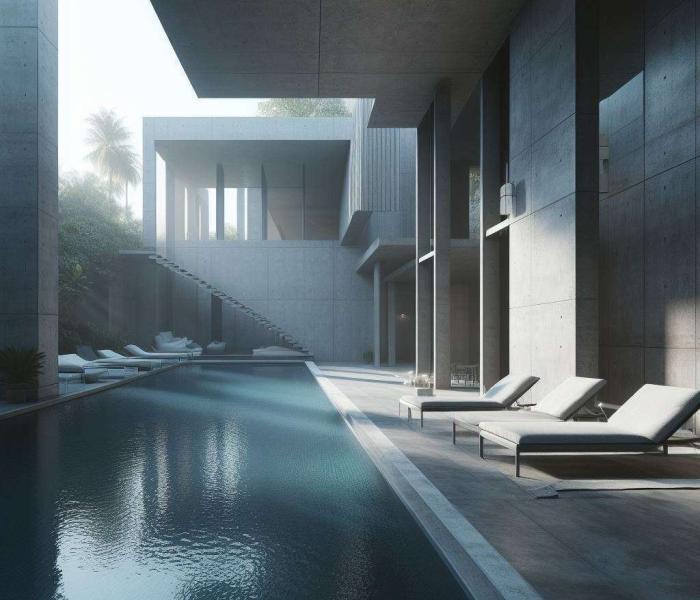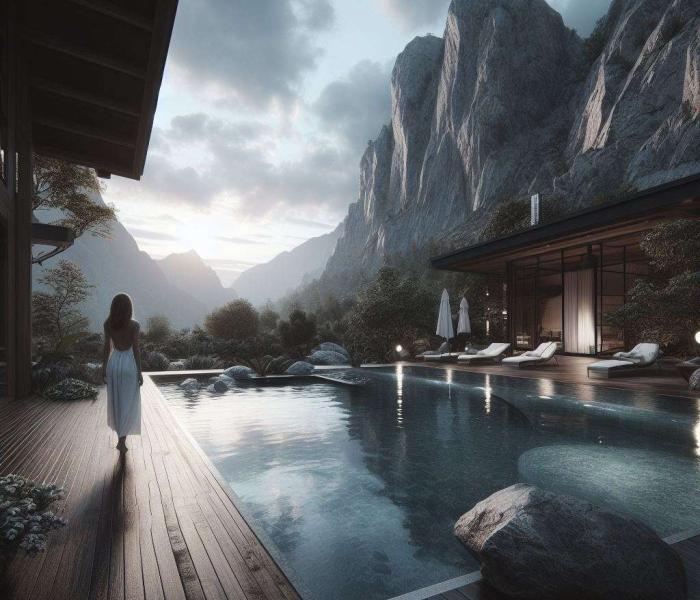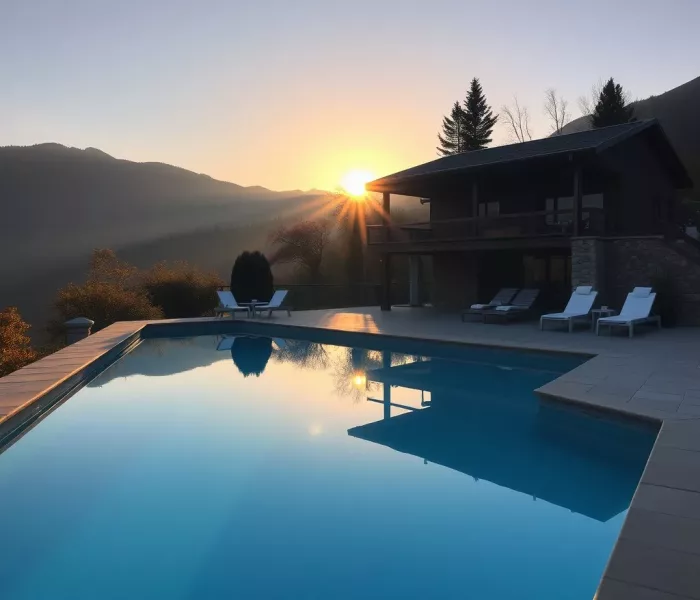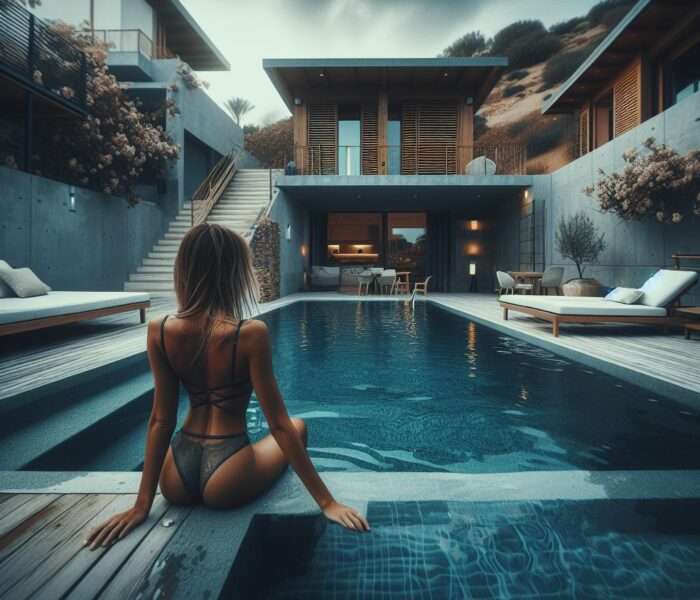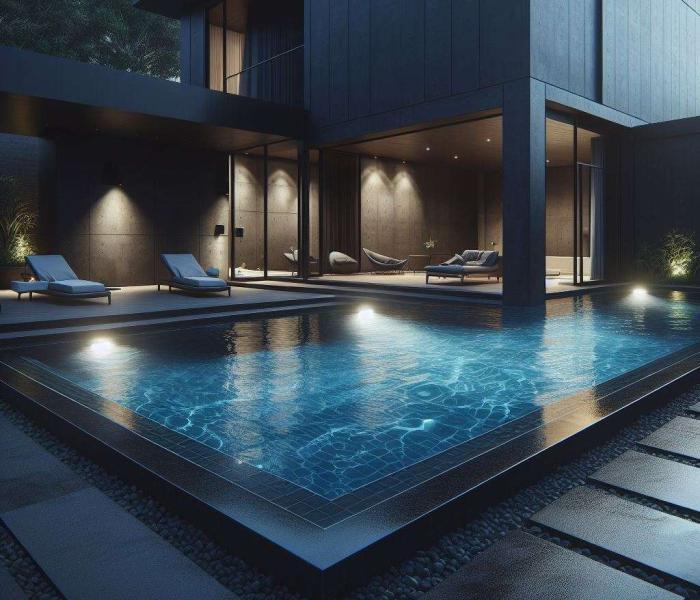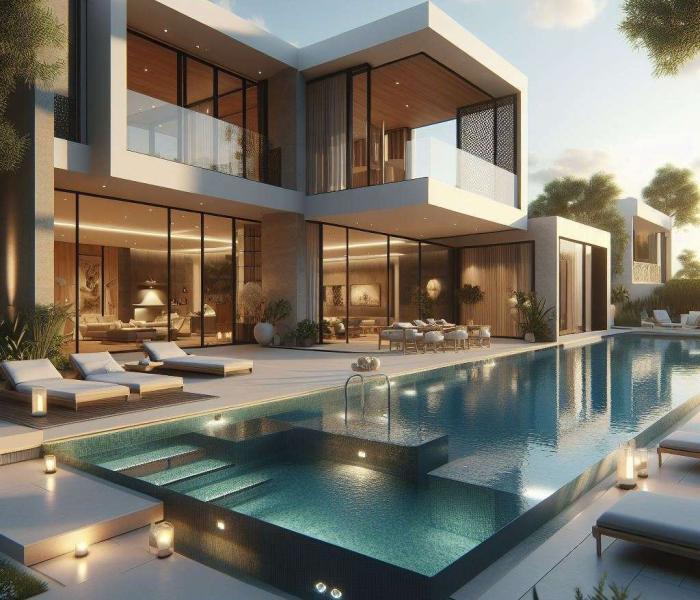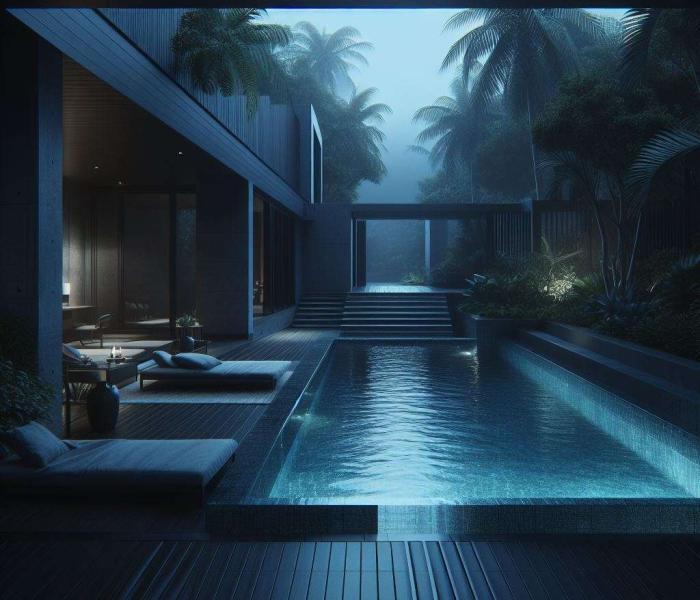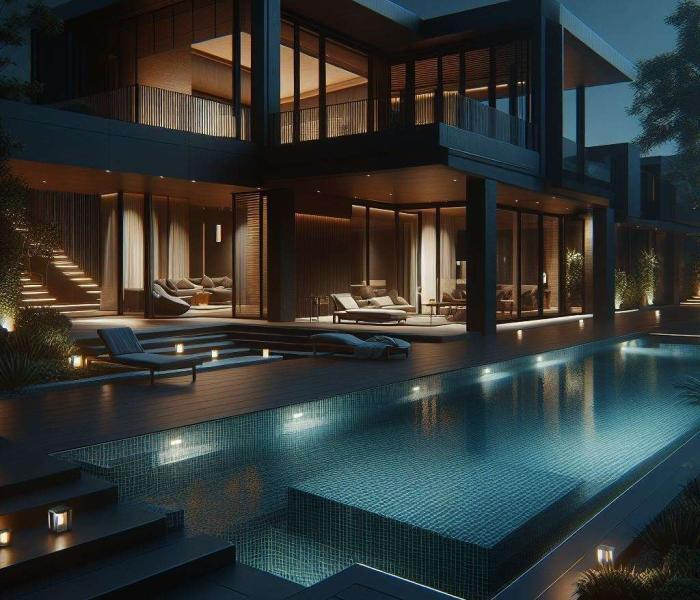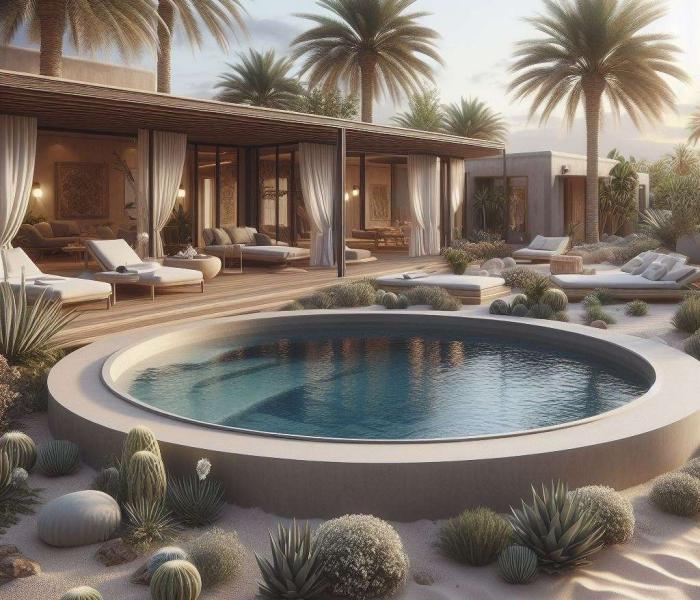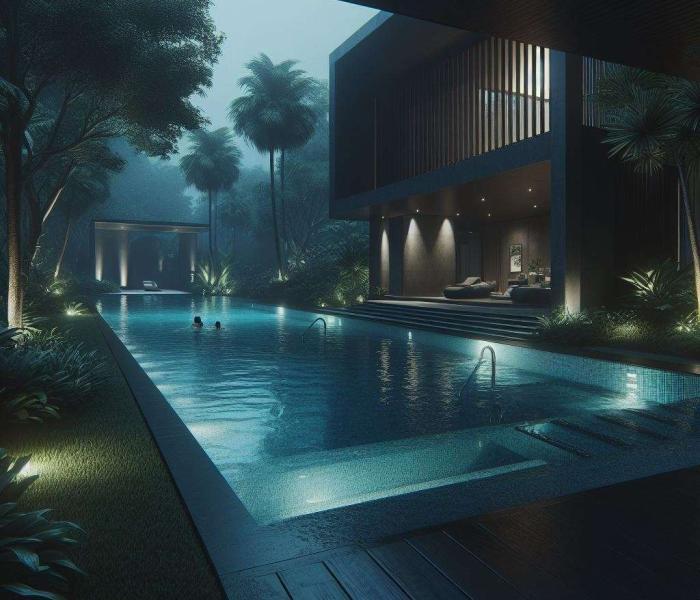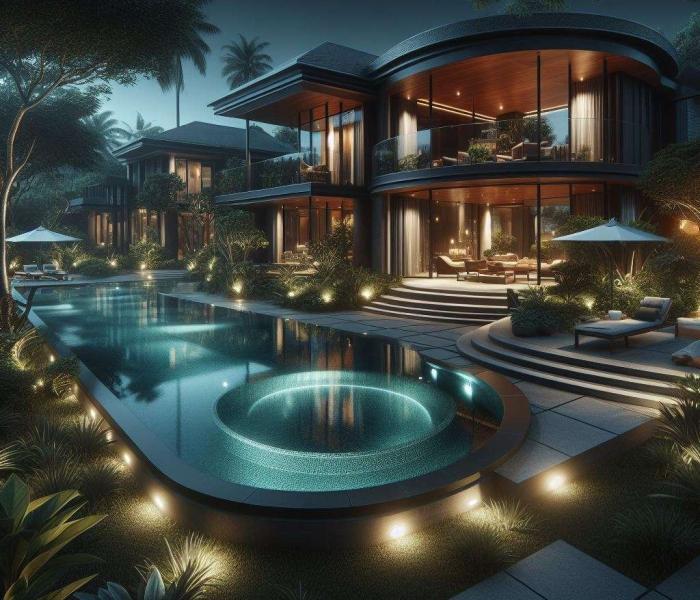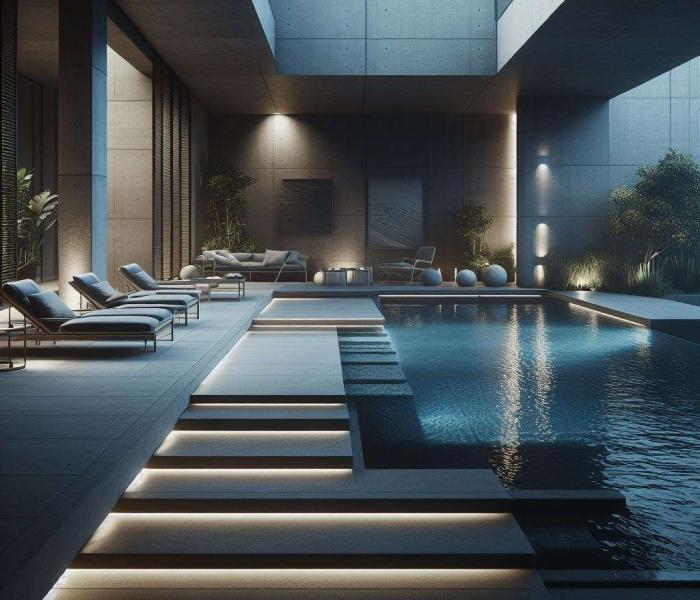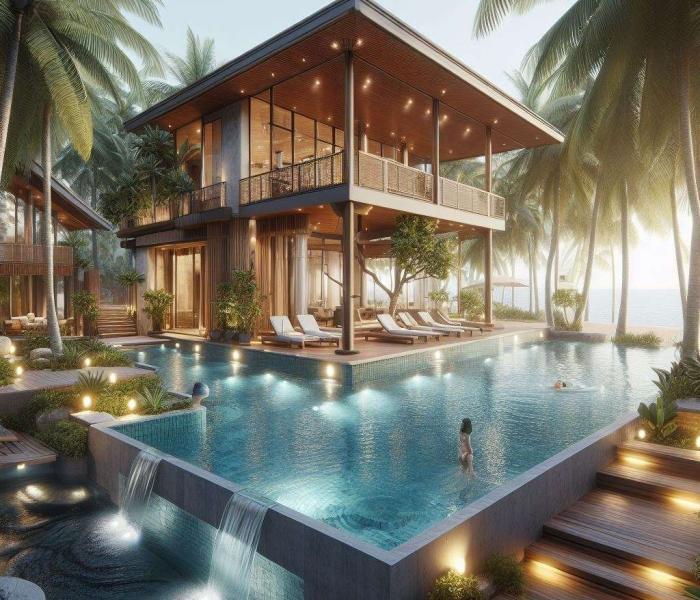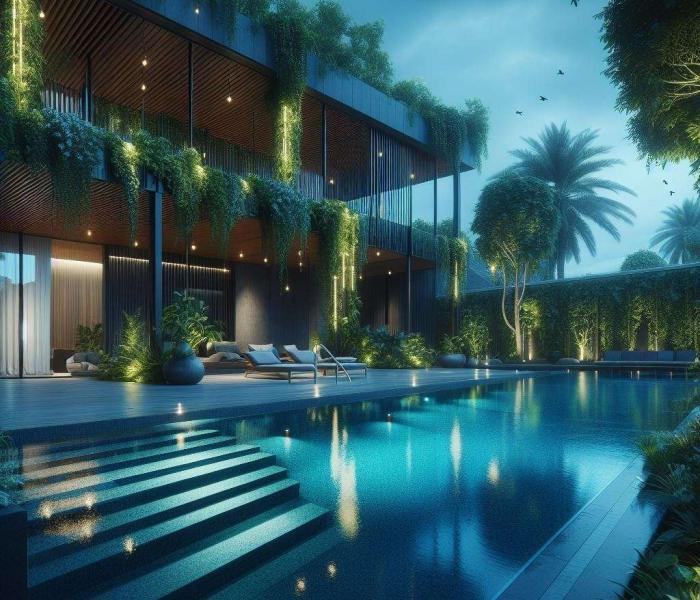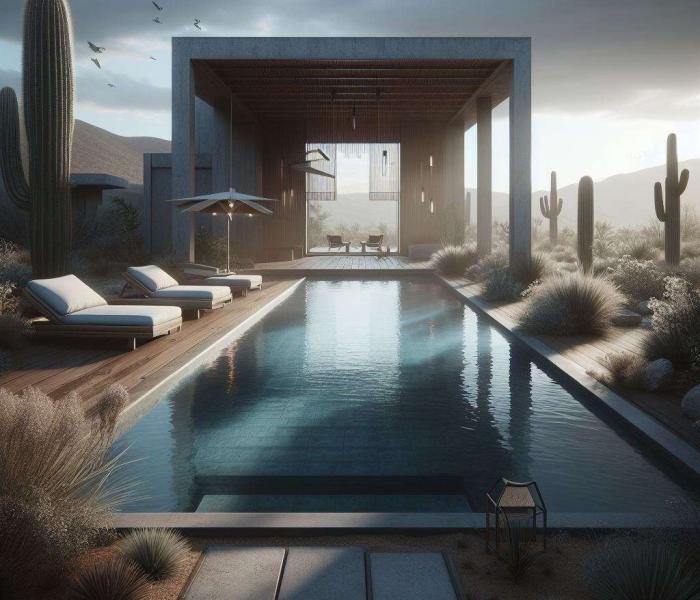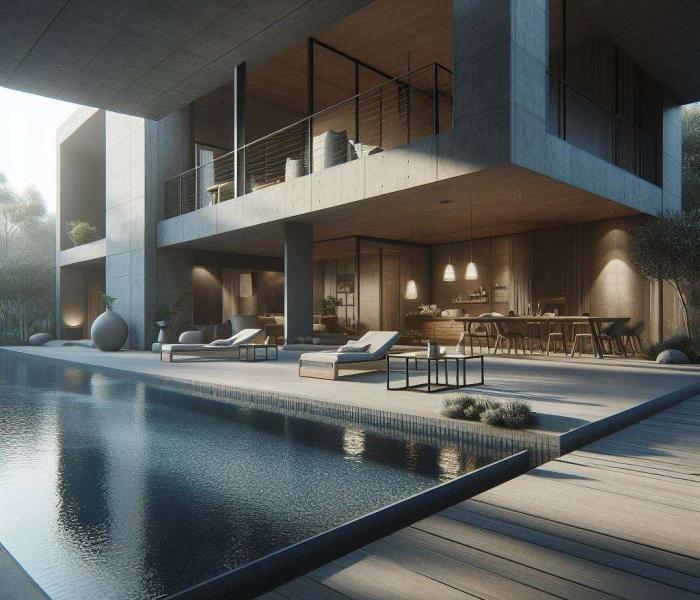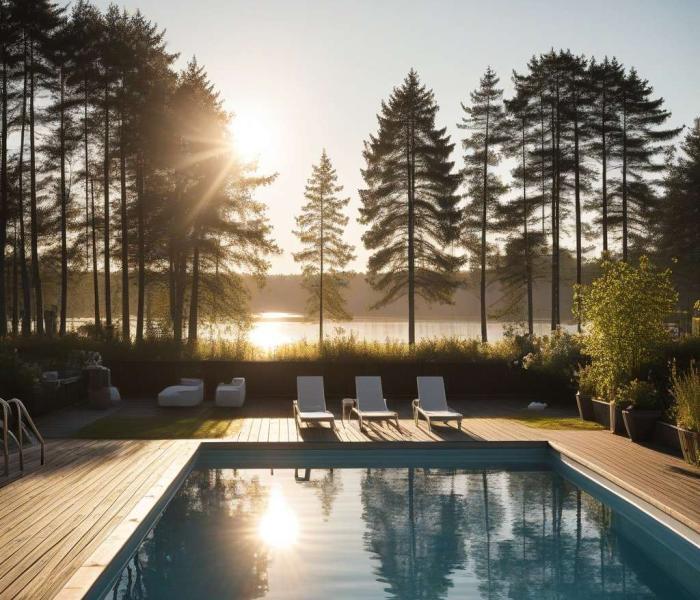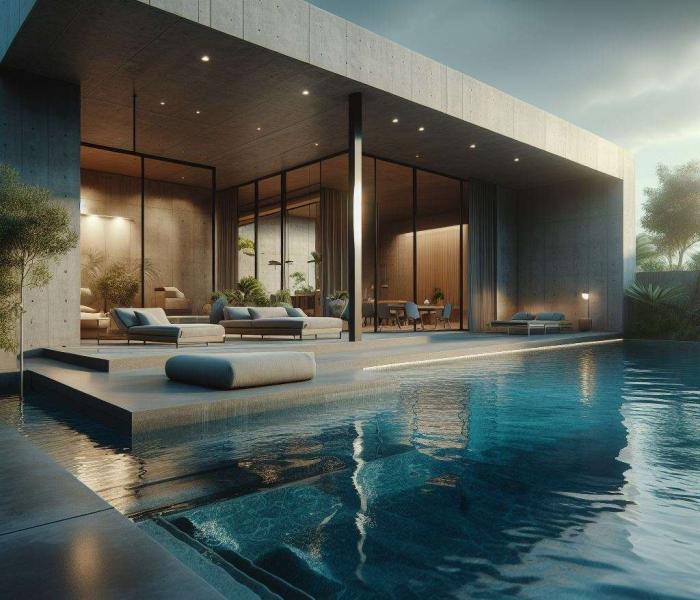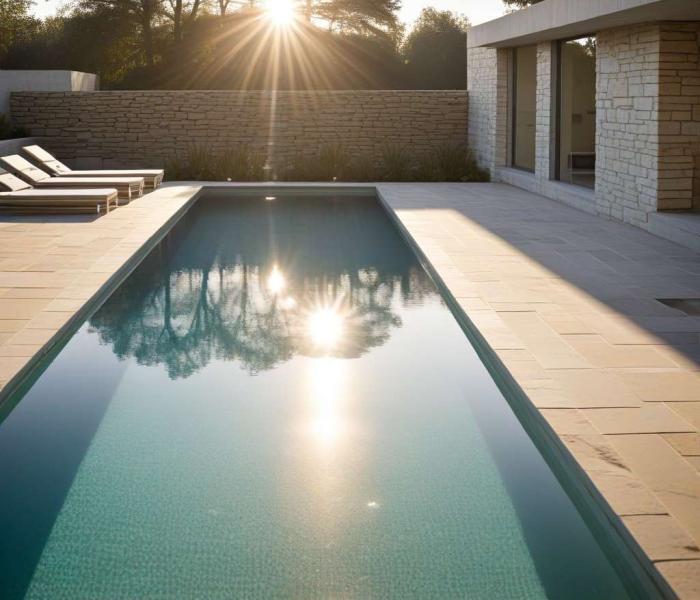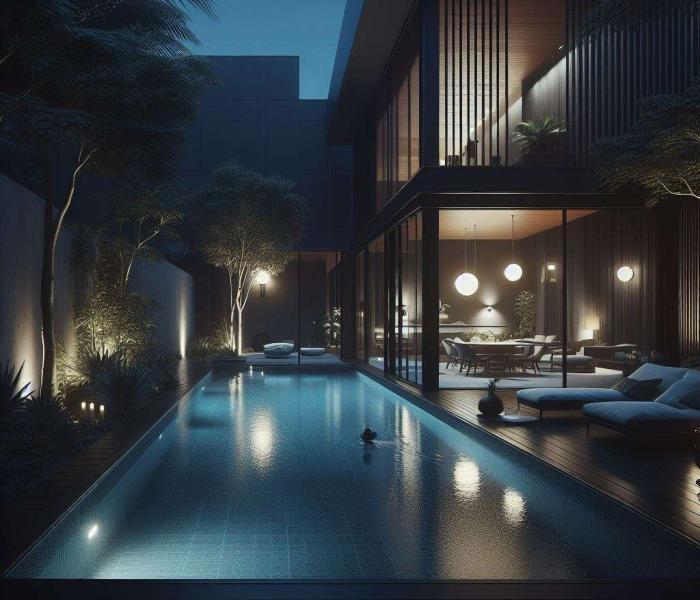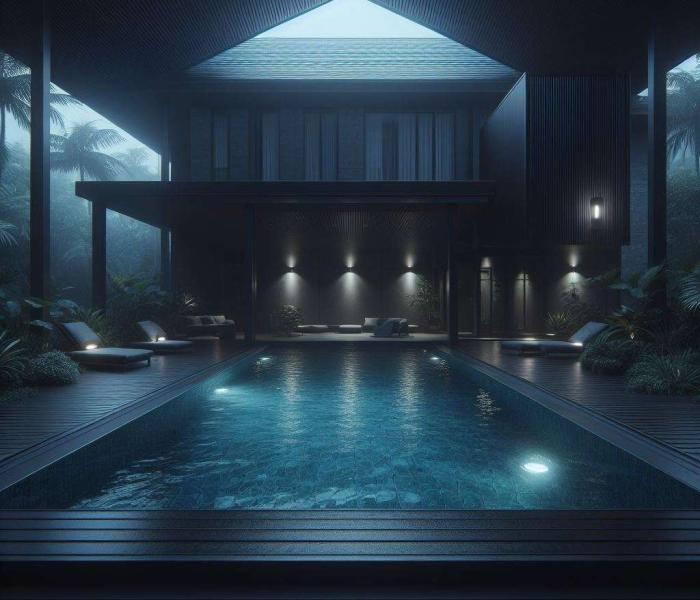AI Based Design
Pool Design
Pool design stands as an exquisite blend of leisure and elegance. Crafted to complement the surrounding architecture and landscape, this aquatic sanctuary offers a tranquil retreat amidst the comforts of home.
The pool’s design harmonizes with the villa’s aesthetic, featuring clean lines and a minimalist appeal that accentuates the property’s charm. Its size and shape are carefully considered, creating a balance between a refreshing oasis and a seamless extension of the villa’s ambiance.
Surrounded by lush greenery or adorned with elegant tiling, the pool area radiates an air of sophistication. Thoughtfully placed lounge chairs or shaded seating areas offer secluded spots for relaxation or social gatherings, inviting residents to bask in the sun or unwind in the shade.
The pool’s design integrates modern amenities and safety features while maintaining a sense of understated luxury. Innovative lighting options, underwater features, and heating systems enhance the pool’s allure, ensuring a delightful experience day or night, throughout the seasons.
This pool design isn’t just an aquatic feature; it’s a centerpiece that complements the villa’s aesthetic, offering a private oasis where residents can escape the bustle of daily life, unwind in tranquility, and create cherished moments of leisure in the comfort of their own villa.
Designing a pool involves several important aspects to ensure functionality, safety, aesthetics, and sustainability. Here are some key considerations:
- Location: Choose a suitable location for the pool, considering factors such as sun exposure, privacy, accessibility, and views.
- Size and Shape: Determine the size and shape of the pool based on available space, intended use, and aesthetic preferences. Rectangular, oval, kidney-shaped, and freeform pools are common options.
- Depth: Decide on the depth of the pool based on the intended use, such as diving, swimming laps, or recreational activities. Consider safety regulations regarding depth changes and diving areas.
- Materials: Select appropriate materials for the pool shell, such as concrete, fiberglass, or vinyl. Consider durability, maintenance requirements, and aesthetic appeal.
- Filtration and Circulation: Install an efficient filtration and circulation system to maintain water quality and clarity. Consider factors like pump size, filter type, and circulation patterns.
- Safety Features: Incorporate safety features such as fences, gates, pool covers, and alarms to prevent accidents and comply with regulations.
- Surroundings: Design the pool surroundings with elements like decking, landscaping, lighting, and seating areas to enhance functionality and aesthetics.
- Accessibility: Ensure the pool is accessible to all users, including individuals with disabilities, by incorporating features like ramps, handrails, and zero-entry areas.
- Water Features: Enhance the pool design with water features such as waterfalls, fountains, jets, or slides to create visual interest and add to the recreational experience.
- Heating and Lighting: Consider options for heating the pool to extend the swimming season and installing adequate lighting for safety and ambiance during evening use.
- Maintenance Access: Design the pool layout to facilitate easy access for maintenance tasks such as cleaning, servicing equipment, and winterizing.
- Environmental Impact: Minimize environmental impact by incorporating energy-efficient equipment, water-saving features, and eco-friendly construction materials.
- Regulatory Compliance: Ensure compliance with local regulations, building codes, zoning laws, and safety standards throughout the design and construction process.
- Budget and Timeline: Establish a realistic budget and timeline for the pool project, considering all associated costs such as construction, landscaping, permits, and ongoing maintenance.
By carefully considering these aspects during the design phase, you can create a pool that meets your specific needs and enhances the overall appeal and value of your property.
